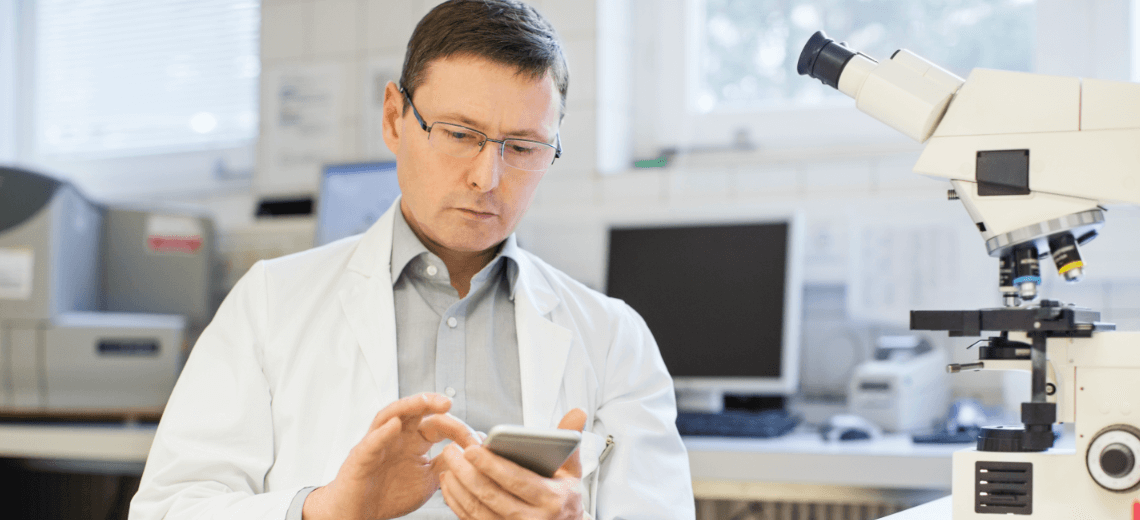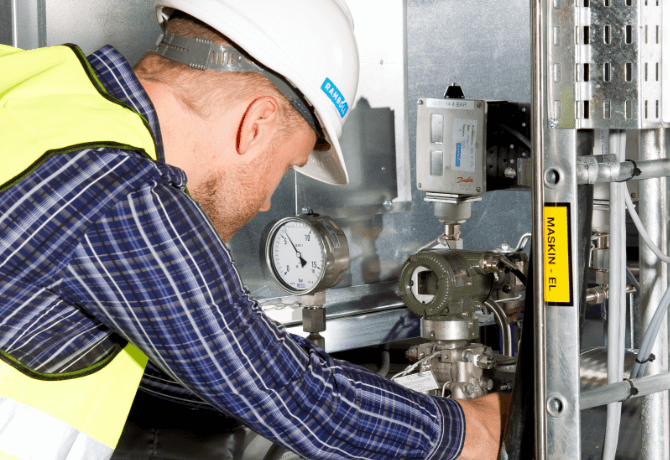How Wastewater Treatment Plants Are Embracing the Digital Age
In America there are over 14,500 Publicly Owned Treatment Works (POTWs), also known as wastewater treatment plants (WWTPs). The majority of these treatment operations were… read more
Mar 26, 2020
# of Minutes to Read

In America there are over 14,500 Publicly Owned Treatment Works (POTWs), also known as wastewater treatment plants (WWTPs). The majority of these treatment operations were designed and built years ago, yet the importance and need for them grows every year.
By 2050 the United Nations predicts an additional 2.5 billion people will be living in our cities and urban areas. As populations and the demand for clean water increase, so does the stress placed on the ageing infrastructure that exists in sewage treatment plants.
WWTPs already have a lot on their plate. Every day, Plant Managers, Wastewater Directors and Wastewater Operators are trying to:
- Reduce operating costs by keeping energy and material usage to a minimum.
- Ensure their wastewater is properly treated so no contaminated water is accidentally discharged into the environment.
- Uphold high reporting standards and sustain good relationships with local authorities and environmental agencies.
- Improve processes to make their operational decision-making less reactive and more proactive.
Today, treatment plants need to create more effective and efficient treatment systems, all while reducing their footprint. WWTPs face increasing pressure to not only improve water quality, but to do so in a way that preserves resources and minimizes leakage.
This is why parts of the industry are even renaming their operation from being a ‘wastewater treatment plant’, to being a ‘water resource recovery facility’. This shift requires technology that will improve process efficiency and reduce operation and maintenance costs. It’s technology that most currently don’t have…
The current state of treatment plants
In America, the pipes, pumps and plants used in wastewater treatment systems are nearing the end of their lifecycle.
- In 2017, the American Society of Civil Engineers produced a report card which gave the nation’s wastewater infrastructure a D+.
- The U.S. Environmental Protection Agency estimates that we need to invest $271billion in our wastewater systems over the next 20 years.
- 50+% of Northeast America’s water supply network systems are over 60 years old.
- The same is true for 35% of the Midwest’s water processing infrastructure.
While the demand for improved water treatment processes and technology may be there, up until now WWTPs have based their system settings and resource allocation plans on experience and intuition.
Within the wastewater treatment process, Plant Managers are trying to maintain a balance of ‘good’ bacteria to treat the waste efficiently and safely, and avoid the emergence of ‘bad’ bacteria that can affect the running of the plant and contaminate the environment if discharged.
However, current testing methods of bacteria levels and types are expensive, resource-heavy, and time-consuming.
They rely on field instrumentation and analysis from wastewater testing labs. These come with high human and maintenance costs, yet produce out-of-date results. This is a serious issue given that real-time monitoring and supervision of effluent quality is needed now more than ever.
Fortunately, advances in technology mean the cost of sensors is lower, and therefore the access to data is higher. It’s now time for wastewater managers to embrace both.
Automation is a small word for such a big issue, but on-line sensors and in-situ nutrient analysers can now regularly be used in plants to help reduce costs. Here’s how…
The benefits of WWTPs using sensors and data
New digital technologies, such as sensors and the data they create, can provide treatment plants with new and valuable opportunities. The collection of data is becoming easier which allows real-time monitoring of more parameters.
In WWTPs right now a Plant Manager may wish to use either a sensor or an analyzer to measure certain parameters. The latter is programmed to automatically acquire, analyze, and record results at certain time intervals. This can be very expensive. The process requires human control and, given its cost, is more often used for emergency testing.
On the other hand, the development of sensors has progressed rapidly in recent years, especially as these sensors have been made more appropriate for the harsh environment of WWTPs. This is partly because the communication technology (narrowband and 4G networks) has improved, as has the power of sensors.
By using sensors to integrate data from systems across a plant, WWTPs are able to get a comprehensive view of how their plant is working. In turn this helps them be proactive when it comes to equipment maintenance, meaning they can avoid unplanned downtime.
More specifically, during the various stages of wastewater treatment, sensors can be used to provide accurate analysis of what’s working and what isn’t.
When it comes to checking the quality of one’s treatment process, a Plant Manager will analyse the influent and effluent for things such as its total phosphorus or suspended solids level, and its chemical oxygen demand.
It’s therefore possible to use submersible pressure transmitters or level sensors to monitor wastewater and the fluid pressure at pumps and valves. For example, hydrostatic level sensors can measure the level of chemicals in storage tanks to control inventory.
Another area for sensors is when monitoring the aeration process. Here a wastewater treatment manager is looking to maintain correct dissolved oxygen (DO) levels. Low levels prevent organic matter from degrading and foster the proliferation of filamentous bacteria. High levels simply waste energy, with some reports suggesting that controlling DO can result in savings of 15-20% of electrical costs.
This is why maintaining correct DO levels in real time is so important: it ensures microorganism growth is taking place and prevents the overuse of aeration equipment, saving huge amounts of power and money in the process.
Good data from the aeration stage of treatment can improve accuracy, long-term readability, and plant efficiency, all while reducing costs.
The challenge of sensor technology
The costs of sensor technology have decreased dramatically in the past decade. However, embracing this new technology still requires an upfront investment of both human and financial capital.
Here are some of the challenges facing Plant Managers, Wastewater Directors and Wastewater Operators:
- We need to up-skill today’s workforce. A background knowledge of data science is required to properly utilize the big data being captured in WWTPs.
- The wastewater treatment process is nonlinear and so data can be difficult to model.
- All data collected from sensors needs to be complete and reliable. Given the range of parameters in a WWTP, data will come in different formats and needs to be of a high quality.
- It’s vital that treatment facilities stay up-to-date with technology and data security. If they don’t they risk becoming a cyberattack target.
Why sensor technology is the future for treatment plants
Despite some of these challenges, the continuous measurement that sensor technology offers trumps traditional sampling methods. It allows WWTPs to analyse at the point of sampling and helps to reduce levels of sludge.
Sensors can alert plants to maintenance issues, decreasing the chance of an unexpected shutdown and the costs associated with reactive repairs. While this is good for business, it’s also good for reputation – ensuring regulatory compliance.
A sewage treatment facility can avoid an accidental, but potentially dangerous discharge, while also making data-driven decisions around the plant’s performance, efficiency, and maintenance.
What’s more, platforms are being created which use artificial intelligence (AI) to make sense of the data. These platforms will help support those responsible for wastewater testing – alleviating the need for them to pick up a new PhD in data science (!) – by giving them recommendations based on analysis and learnings from thousands of data sets. We know this because it’s the platform we’ve built at opseyes…

opseyes – the simpler way to test wastewater
With opseyes’ AI-powered testing platform, Plant Managers can check the quality of their wastewater with just one photo, and get results in ten minutes.
All wastewater treatment plants need to do is place a sample of their activated sludge onto a microscope. They then take a photo of the sludge with their phone and upload said photo to the opseyes platform.
Our platform then analyses the photo to identify key bacteria levels and types, and generates a detailed Water Quality Report for the WWTP which highlights any issues and creates a personalised plan for what to do next.
We’ve co-developed our platform with water-testing expert Mr. Frank DeOrio, and trained our AI algorithms on thousands of sludge images, all to allow WWTPs to spend less time testing and more time treating.
What to learn more about implementing new technologies in your treatment plant? Get in touch today.